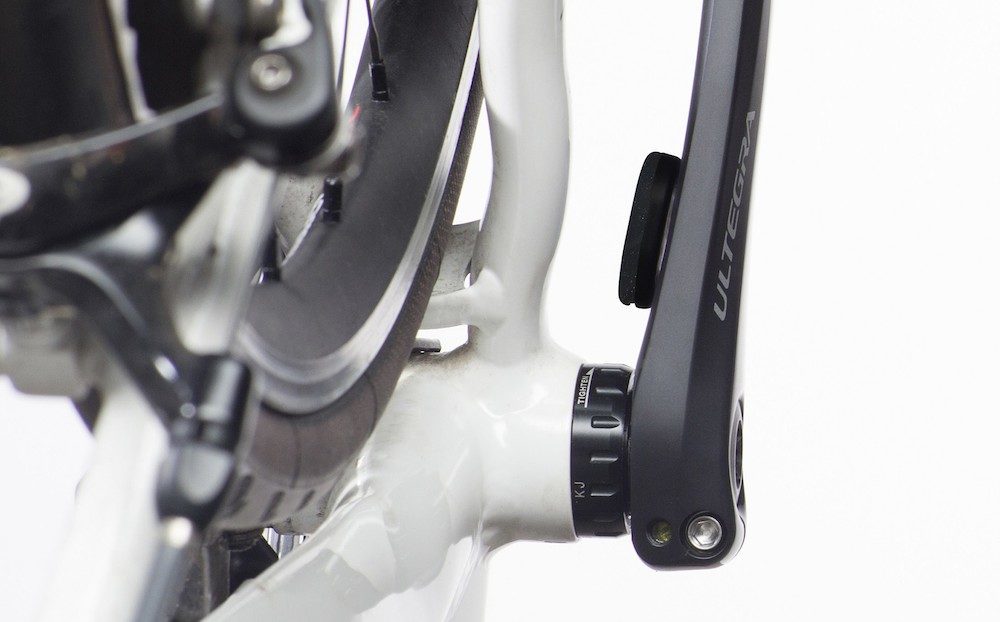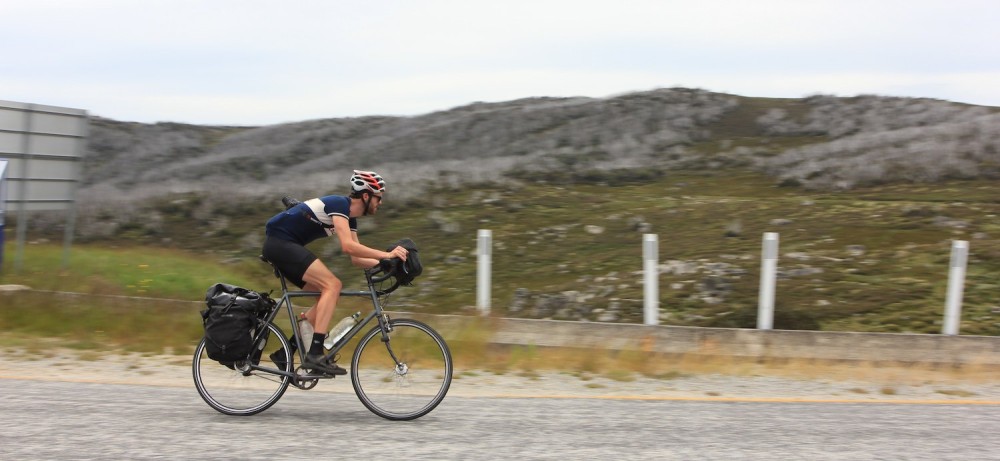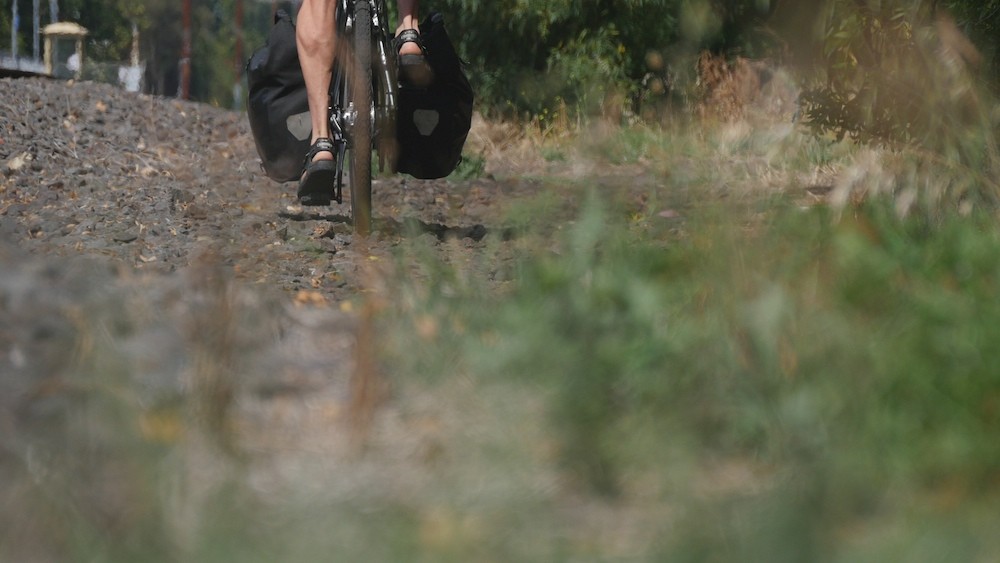Table of Contents
If you like the sound of fresh feeling legs, easier hill climbing and quicker cycling speeds (with the same effort) – it’s time to understand pedalling cadence.
Pedalling cadence is the speed at which you spin your cranks. It’s measured in the number of full crank revolutions that occur in one minute. As we all have slightly different body compositions and muscular strength there doesn’t appear to be an ‘optimal’ pedalling cadence for everyone, but a cadence of between 70 and 90 RPM seems to work best for most.
Over the years, I’ve been increasing my cadence naturally which I’ve found not only makes me a bit quicker but more importantly: my legs feel much less fatigued at the end of every day.
Understanding Pedalling Cadence and Power
Like a car or motorbike, our bodies have an optimal power output and rev range (cadence).
Our power output can be measured accurately through power meters that incorporate strain gauges that can be fitted aftermarket to our bikes. While power meters are the most accurate training tool for athletes, there’s not really any reason to use one on a bike tour. A more simple way to measure your effort is based on how heavy you’re breathing. When you’re working harder, your body has to take deeper and faster breaths to absorb more oxygen. By maintaining a consistent rate of breathing you can roughly maintain a consistent effort.
Pedalling cadence can be measured with a basic bike computer. Most long-term cyclists will agree that anywhere between 70 and 90 RPM is good for all-day riding, perhaps a little higher for a harder effort, and maybe a little lower if you’re an ultra-endurance athlete. For reference, I pedal at about 90 RPM on my bike trips, whether I’m riding 50km, 200km, on the flat or up a steep hill.
Cycling Up Hills With Ease
Road gradients, wind resistance, rolling resistance and weight impact your ability to maintain power at a certain cadence. With an increase in any of these variables, your power output also needs to increase to maintain your cadence.
But don’t worry, hills and the wind don’t actually necessitate extra effort!
That’s because we have gears.
The aim of the game is to use your gears to keep your power (effort) and cadence (RPM) the same at all times.
Switching to a lower gear increases the mechanical advantage, reducing the power required to maintain your cadence. The steeper it is, or the windier it is – the more you will need to flick down through your gears until you find a gear that affords you both a 70-90 RPM cadence and an effort you’re comfortable with.

Learning To Maintain Cadence
The easiest way to learn how to maintain your cadence is to get a bike computer with a cadence sensor. They are not particularly expensive and will allow you to keep track of your pedalling habits. If you have a smartphone, you can get Bluetooth cadence sensors that will display your cadence via a smartphone app. The Bluetooth sensors aren’t the best for everyday use (get a dedicated speed/cadence bike computer) but are definitely the cheapest and easiest to fit for learning gears.
My favourite Bluetooth sensor is the Wahoo RPM II for US $39 on Amazon. You’ll need to spend just a bit of time each ride to get comfortable with using your gears to maintain a 70-90 RPM cadence. Try to do it at a location with varying road gradients. In a really short time, your brain will automatically maintain cadence and change gears while you daydream away!

Calculating Your Bike Gears
Now that you’ve been practising maintaining cadence and changing gears, you may find that your gear ratios are not quite adequate in the hills. With no smaller gears left you may be forced to turn an inefficient cadence! And by turning over a gear that’s too big, you quickly fatigue your muscles. That’s why I advocate for really small gears on touring bikes, not just to get up a hill, but to do hills repeatedly, day after day. After all, hills are NOT harder than cycling on the flat with the right gear ratios.
I have been building a resource library over the past few years to help set up gear ratios on touring bikes. A great place to start is by understanding gear ratios, especially how to calculate and compare them.

Cadence + The Right Gear Ratio Is The Secret To Uphill Cycling
If you find hills HARD you have the most to gain through optimising your cadence and gear ratios. That’s because hills aren’t actually harder than cycling on the flat.
Get yourself a cadence sensor to master both gear use and pedalling cadence. It will take you a very short time to learn this skill, and soon your brain will set a great cadence and will even complete the gear changes for you. That’s pretty cool, huh?
You may need to swap out some parts if you find that you’re in your lowest gear and your cadence isn’t high enough. Check through my low gear resources HERE and drop a question below if you need any help.
Once you keep your power (effort) and cadence (RPM) the same at all times, I can promise you that uphill riding will be as delightful as the rest.








Hi Alee, very nice article! I’ve been digging through your linked resources and can not find out how you got those gears on your curve? Is it an 11-speed Ultegra long cage rear derailleur with Roadlink? I thought that would only work up to 11-36 cassettes? What cassette are you using?
Oh, excellent! Are you using an XT or Ultegra chain with it? I thought road and mountain 11-speed are not really compatible because of spacing. Thanks!
It’s an Ultegra chain. The cassette fitted onto the 11s road freehub body with a small spacer. Shifting is perfect!
You equate (correctly) effort with power but never mention the needed pedal force (or alternatively applied torque). Power is the product of cadence and applied torque — most power meters measure the torque (some directly measure pedal force and multiply by crank arm length to get torque, etc ) and multiply by the cadence to get the power. So for a given power output you reduce the needed pedal force by switching to a lower gear to increase your cadence, which is what you describe above. This is what I would call reducing your “effort” while maintaining your power output, although I would not have picked the word effort in this context as effort is usually used to mean work which is related to power. To reduce the power required you just have to go slower.
I certainly agree spinning is the way to go, I prefer 100 rpm as a cruising cadence and shift when I drop down to 90. I don’t do long distance touring but still like to reduce the load on my knees.
Hi Tom. Thanks for your comment and you’re right – in a strictly engineering sense, my terminology doesn’t match up. I’m trying to keep my writing about this kind of stuff as easy to read and understand as possible. I chose ‘effort’ because I think people can relate to the feeling of more or less effort on a bike ride. Let me re-read my piece and see if I can improve the terminology further! Alee.
How about calling it how “hard” you are pedaling, as in how hard you push on the pedals? I think effort or work is too close to power to not cause confusion.
I’ve thought about this all day and the only other words I can think of that I think makes sense are ‘physical exertion’. Again, not necessarily correct in an engineering sense, but perhaps more relatable to readers.
So it seems to me the only reason cycling up hills is no harder than cycling on the flat is because you choose to normalise your effort levels to be the same, i.e. you choose to push just as hard on the flat as you need to up a hill (which in my book makes you either crazy or way fitter than me). So uphill you cycle 90 revs per minute, with a certain torque, equating to a certain power, which propels you up the hill pretty slowly as you’re in a low gear. On the flat you cycle the same 90 revs per minute, with the same torque, which propels you quickly as you’re in a high gear. You aim to keep everything constant except the gear which thus alters your speed. Right? Makes sense.
What I do, on the other hand, is cycle up a hill at a certain cadence and a certain torque, which is more effort than I could possibly sustain all day, so when it comes to the flat I reduce my torque to give my legs a rest… Your response might be, if I had a lower gear up hill I could maintain the same cadence and torque on the hills as I do on the flats and maintain a constant effort all day (i.e. the whole point of your article…). I guess that’s true and I should work on that but I’d be going damn slow up those hills!
I’m also not very good at maintaining constant cadence and effort for long periods. I tend to modulate, pushing for 20 minutes, then slowing the cadence to rest a bit, etc. Even with the chain off my legs would tire after 10 hours of 90revs per minute.
Maybe this is all a bad habit from a decade of riding mountain bikes with a single 38t front ring, in which case the only way up a hill is to exhaust yourself, then relax on the flats. So thanks for the article, I’ll work on my consistency of cadence. And get fit, perhaps.
You’ve definitely got your head around it all. And look, there’s nothing wrong with going harder in the hills, and easier on the flat if you can recover in between to do it again and again. My main point is that you may be able to ride more efficiently if you don’t load your muscles too much in the hills, resulting in better muscle recovery, day after day. It’s definitely worth playing with your cadence and gearing!
Nice work Alee, I’ve been playing with this on my last tour and came up with the same conclusions. use the gears to keep your or in this case my legs spinning in the comfortable cadence. And, enjoy the ride. Yup the hills weren’t all that much of a problem, until the end that is but that was another matter. For most of the trip I did just this and I was fine even at the end of each day.